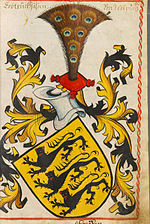Today's pictures are of a helm crest that is available for purchase in the US. The artist sells several varieties and they are usually used on SCA heavy combat helms. They meet the safety requirements for both heavy foot combat and equestrian use. We are still playing with a way to mount it on a helm.

The following pictures show the flexibility under pressure. The crest is under the same amount of pressure in the first image and the second. It returns to the original shape, after 30-50 crushes. It has been stepped on, sat on and struck with rattan weaponry without ill effect. I think that several actual combat sessions would leave it looking a bit scuffed and dirty but if it were attached in a way that allowed it to detach under a strike, I suspect it would hold up to numerous fights without major problems. If it were attached permanently, several combat sessions could cause ripping in the foam.

The crest was easy to crush on its side, but only depressed slightly from the top down. I suspect that a horse that was trained and comfortable with the movement and extra sensory input of crest combat would not be bothered by this type of crest in action. If it fell on the ground, it is soft enough to not cause injury, itself, if stepped on. As with any item, tripping could be an issue once it were struck from the helm.

The base is shown in the final image. It shows an inverted domed base.
I am playing with the idea of putting a domed leather cap on the helm first, attached by lacing to 4 holes in the crown. There are some holes seen in the crests of a couple of extant helms though, admittedly, they don't seem to be common. I am hoping to attach the various helms to a matching nestling domed base, so they can be altered.
This style is obviously a modern substitution. It is, however, an easily accessible option for people who just want to buy a crest that looks good. Over all, it seems a durable, safe design.








 This last image shows what could be knights using bastons or wide swords.
This last image shows what could be knights using bastons or wide swords.

















